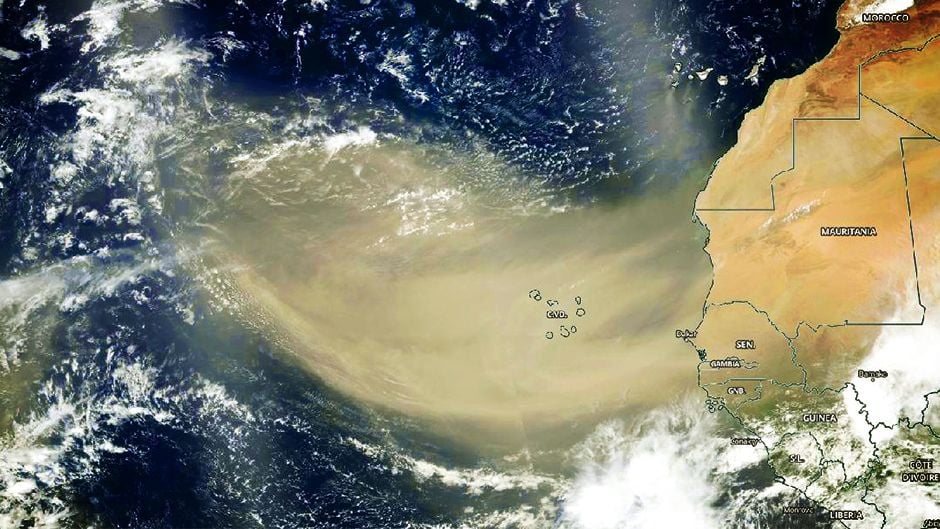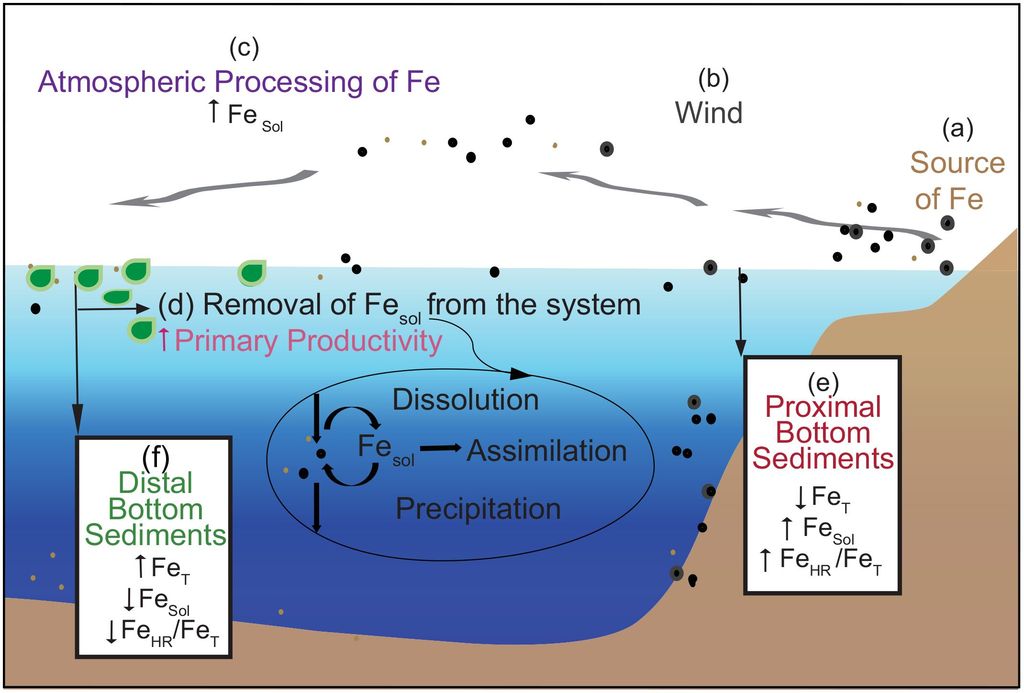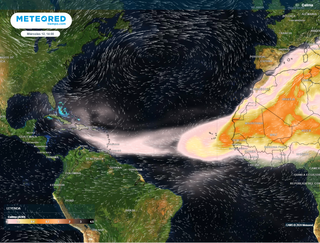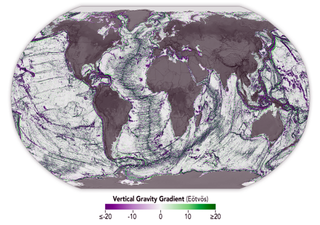Scientists discover that Saharan dust is very effective for life the more distance it travels in the atmosphere
A scientific study shows that iron bound to Sahara dust, which blows west over the Atlantic, has properties that change with distance traveled and is used by certain marine and terrestrial beings. It is the so-called bioreactive iron.

Iron is an indispensable micronutrient for life, which allows processes such as breathing, photosynthesis and DNA synthesis. Iron availability is usually a limited resource in today's oceans, which means that increasing the flow of iron towards them can increase the amount of carbon fixed by phytoplankton, with consequences for the global climate.
The iron of the Saharan dust changes its properties with distance and is more effective for life
Iron reaches the oceans and terrestrial ecosystems through rivers, melting glaciers, hydrothermal activity and, especially, wind. But not all of their chemical forms are "bioreactive," that is, they are available for organisms to absorb from their environment.
"Here we show that iron bound to Sahara dust that blows west over the Atlantic has properties that change with the distance traveled: the greater the distance, the more bioreactive the iron," said Dr. Jeremy Owens, associate professor at Florida State University and co-author of a new study in Frontiers in Marine Science.
"This relationship suggests that chemical processes in the atmosphere turn the less bioreactive iron into more accessible forms."
Owens and his colleagues measured the amounts of bioreactive and total iron in drilling cores at the bottom of the Atlantic Ocean, collected by the International Ocean Discovery Program (IODP) and its previous versions. The IODP aims to improve our understanding of climate change and ocean conditions, geological processes and the origin of life.
The researchers selected four nuclei based on their distance from the so-called Sahara-Sahel Dust Corridor, which extends from Mauritania to Chad and is known to be an important source of dust-bound iron for the windward areas.
The two closest nuclei to this corridor were collected approximately 200 and 500 km west of northwestern Mauritania, a third in the mid-Atlantic and the fourth about 500 km east of Florida. The authors studied the 60 to 200 upper meters of these nuclei, which reflects deposits over the last 120,000 years, the time elapsed since the previous interglacial period.
They then used a series of chemical reactions to reveal the total iron fractions present in the sediments in the form of iron carbonate, goethite, hematite, magnetite and pyrite. The iron present in these minerals, although not bioreactive, was probably formed from more bioreactive forms through geochemical processes on the seabed.
"Instead of focusing on the total iron content, as previous studies had done, we measure the iron that can easily dissolve in the ocean and that marine organisms can access for their metabolic pathways," Owens said.
"Only a fraction of the total iron present in the sediments is bioavailable, but that fraction could change during the transport of iron from its original source. Our goal was to explore those relationships."
Blowing in the wind
The results showed that the proportion of bioreactive iron was lower in the westernmost nuclei than in the easternmost ones. This implied that a correspondingly greater proportion of bioreactive iron had been lost from the dust and had presumably been used by organisms in the water column, so that it had never reached the sediments of the bottom.

"Our results suggest that during long-distance atmospheric transport, the mineral properties of powder-bound iron, which was originally not bioreactive, change, making it more bioreactive. This iron is then absorbed by the phytoplankton, before it can reach the bottom," said Dr. Timothy Lyons, professor at the University of California at Riverside and final author of the study.
"Transported iron seems to stimulate biological processes in the same way that iron fertilization can affect life in the oceans and continents. This study is a proof of concept that confirms that iron-bound dust can have a major impact on life at great distances from its source."
Reference
Bridget Kenlee et al, Long-range transport of dust enhances oceanic iron bioavailability, Frontiers in Marine Science (2024). DOI: 10.3389/fmars.2024.1428621








